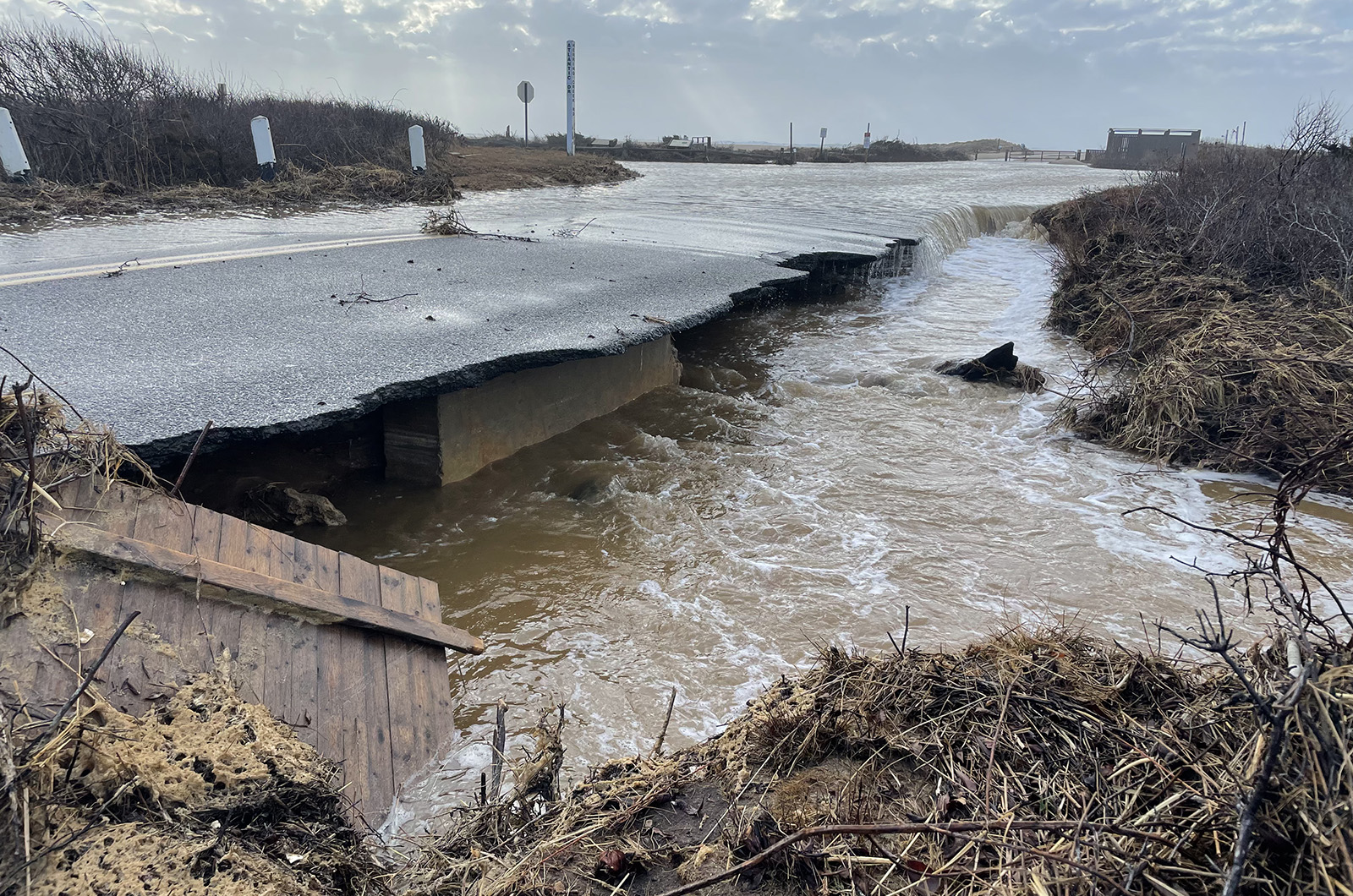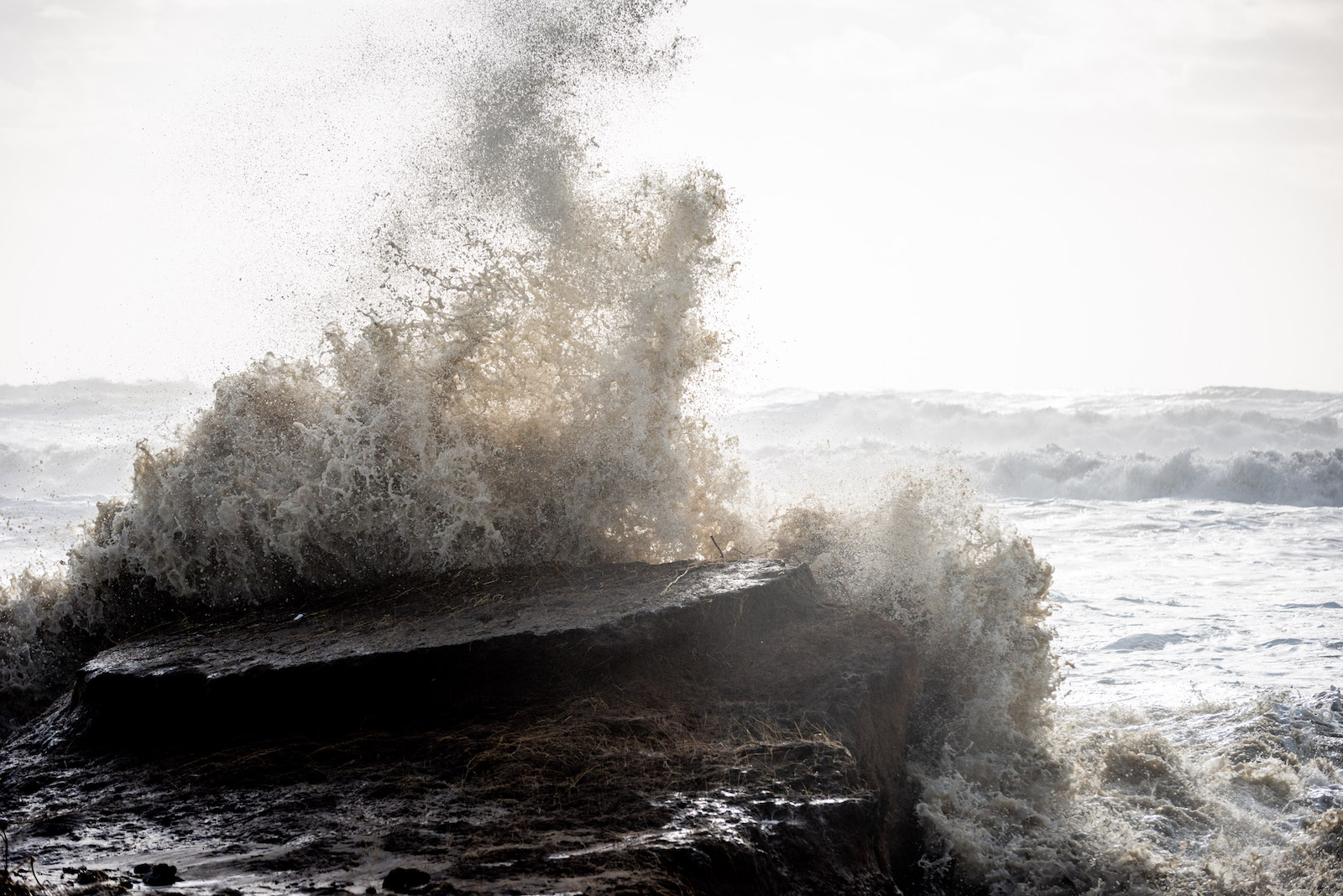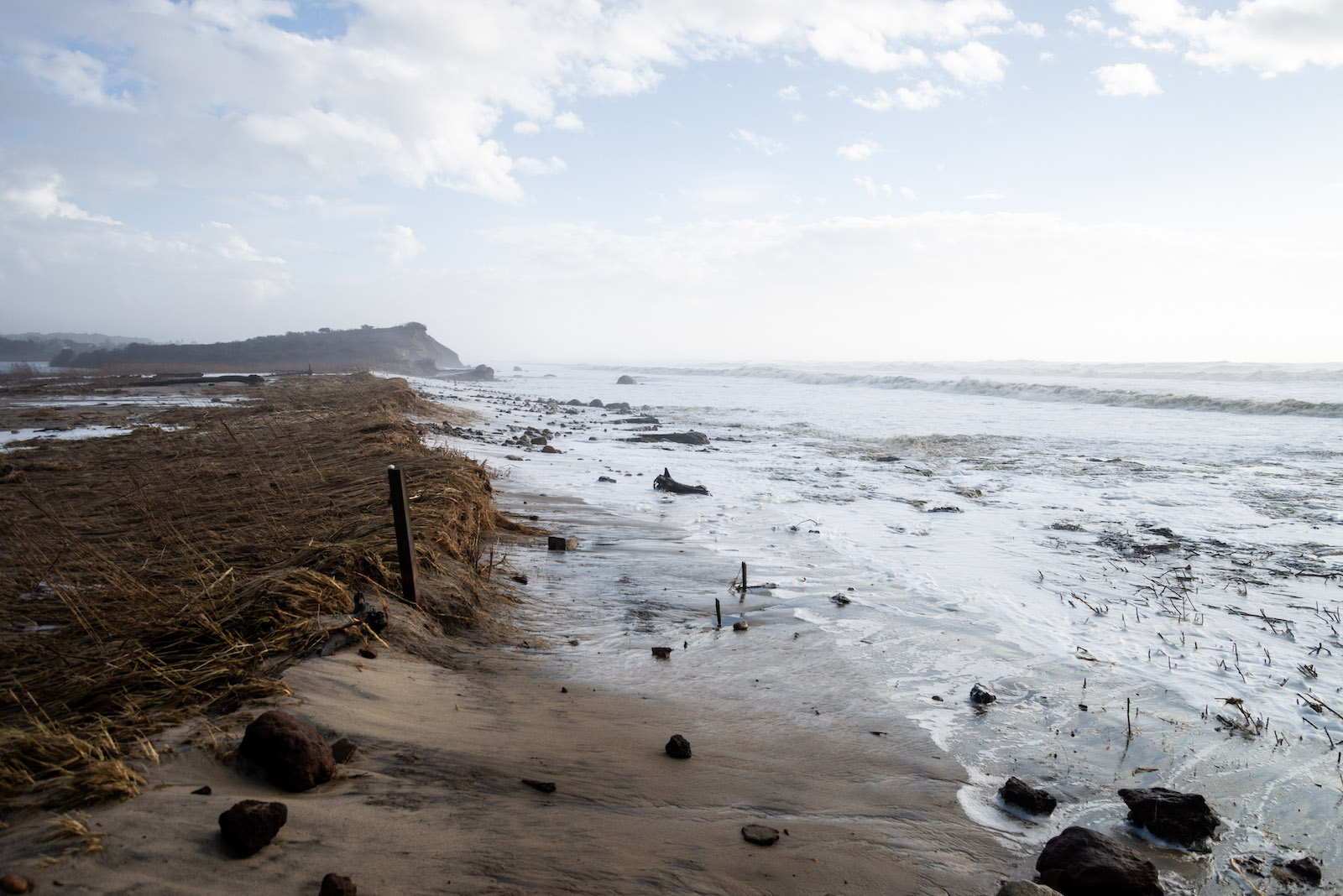A strong storm with winds of 50 miles per hour hit the Vineyard Tuesday night, causing erosion, destructive washovers and scattered power outages throughout the Island.

More than a dozen Steamship ferries were canceled, Five Corners in Vineyard Haven was underwater and south shore beaches continued to be pounded by waves on Wednesday.
The storm’s power was on full display in Edgartown, where the ocean washed over South Beach, causing a culvert on Atlantic Drive to fail. About a fifth of the waterfront road had torn away, only a couple of weeks after a sinkhole had opened up there in a December storm.
The Chappy Ferry had also stopped running Wednesday morning as much of the downtown waterfront was inundated with water.
With water still lapping over Atlantic Drive, Edgartown town administrator James Hagerty said the road would remain closed until a full assessment could be done. Cleanup work would likely happen after Saturday, when the Island is expected to see more rain and southeast winds up to 55 miles per hour.
“We’ll assess it after it dries up and look at what needs to be done to make it safe,” Mr. Hagerty said.
The storm, which was predicted to have winds between 30 and 40 miles per hour with gusts up to 60 miles per hour, dumped about three inches of rain. The extra water and high waves added to the woes in Vineyard Haven, where even minor storms can make it impossible to navigate the waterfront.
This storm was similar to the Dec. 18 storm that walloped the Island’s south shore. It, too, came from the south, creating breaches and erosion on several beaches, including Lucy Vincent and Squibnocket beaches in Chilmark.
“[This is] worse than [Hurricane] Sandy was,” Chilmark select board member James Malkin said while walking along Lucy Vincent Beach Wednesday morning. In late October 2012, Hurricane Sandy caused extensive erosion on the south shore.
On Wednesday, the ocean had breached into the nearby pond and waves were starting to make their way into the beach parking lot. Curious beachgoers waded through the water to see the damage at the beach, which had already lost about 13 feet of sand last month.
“You can see the chunks falling off,” said Joan Malkin, chair of the Martha’s Vineyard Commission, while touring the damage with her husband.
Every wave coming in was going into the pond, she added.
The Trustees of Reservations also reported significant erosion at its properties. Wasque on Chappaquiddick lost a large amount of coastal bluffs, and the dunes at Long Point in West Tisbury were flattened after getting battered in the previous storm.
“We saw flooding in the sand plain grasslands at Long Point at high tide, which is concerning to us because it is a fragile ecosystem,” said Mary Dettloff, a Trustees spokesperson.
The waves along the south shore were tall, though slightly smaller than during the previous storm. The Woods Hole Oceanographic Institution’s Martha’s Vineyard Coastal Observatory off South Beach recorded waves of about 18 feet shortly after 12:30 a.m. Wednesday. The Dec. 18 storm had waves of about 25 feet.
The observatory is about two miles off South Beach in about 50 feet of water. These waves were among the highest in recent memory, said Anthony Kirincich, a senior scientist with WHOI who oversees the coastal observatory.
“It had not been at 30 feet any time in the last decade,” he said.
Officials have said that southerly storms can be more destructive on the Vineyard than the typical winter northeaster, as the Island has no buffer on its south shore.
“If the winds are out of the south, there’s a lot more ocean for the waves to build,” Mr. Kirincich said.









Comments (6)
Comments
Comment policy »